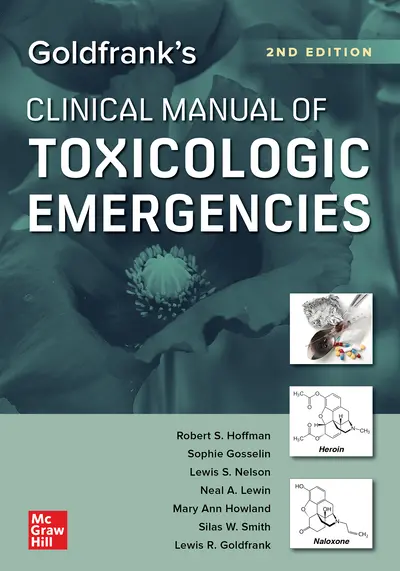My Account Details

ISBN10: 1260474992 | ISBN13: 9781260474992

* The estimated amount of time this product will be on the market is based on a number of factors, including faculty input to instructional design and the prior revision cycle and updates to academic research-which typically results in a revision cycle ranging from every two to four years for this product. Pricing subject to change at any time.
Instructor Information
Quick Actions (Only for Validated Instructor Accounts):
Derived from the definitive guide to medical toxicology, this hands-on companion provides accurate information for diagnosing and treating poisoned patients on the spot
A Doody's Core Title for 2024!
After more than a decade on the market, Goldfrank’s Toxicologic Emergencies has established itself as the go-to reference for medical toxicology—and this companion manual distills the most important information into a portable, easy-to-navigate resource.
Goldfrank’s Manual of Toxicologic Emergencies distills critical information into short summaries and synopses, so you can use it to treat patients in clinical settings or for quick review of critical topics. Fully updated to ensure all information is completely current, this new edition is filled with tables, figures, images, and other visuals to make finding the right answers quick and easy. Each chapter is a direct distillation of the corresponding chapter in Goldfrank’s Toxicologic Emergencies.
Whether you’re a medical toxicologist, pharmacist, physician, nurse practitioner, or student, Goldfrank’s Manual of Toxicologic Emergencies provides all the right answers where and when you need them.
Covers the full range of xenobiotics:
- Includes pharmaceuticals, recreational drugs, and substances of abuse; food and plant toxins; envenomations; household toxins; pesticides and herbicides; rodenticides; metals; poison gases; and environmental toxins
- Systematically reviews toxicokinetics, pathophysiology, clinical manifestations, diagnostic testing, and management for each xenobiotic
- Provides "Antidotes in Brief"—at-a-glance guides to specific antidotes and their primary applications
- How to manage the poisoned or overdosed patient
- What techniques effectively eliminate toxins
- Which imaging modalities yield the best results
The table of contents (below) will mirror the main text, both for completeness and ease of cross-referencing.
Need support? We're here to help - Get real-world support and resources every step of the way.